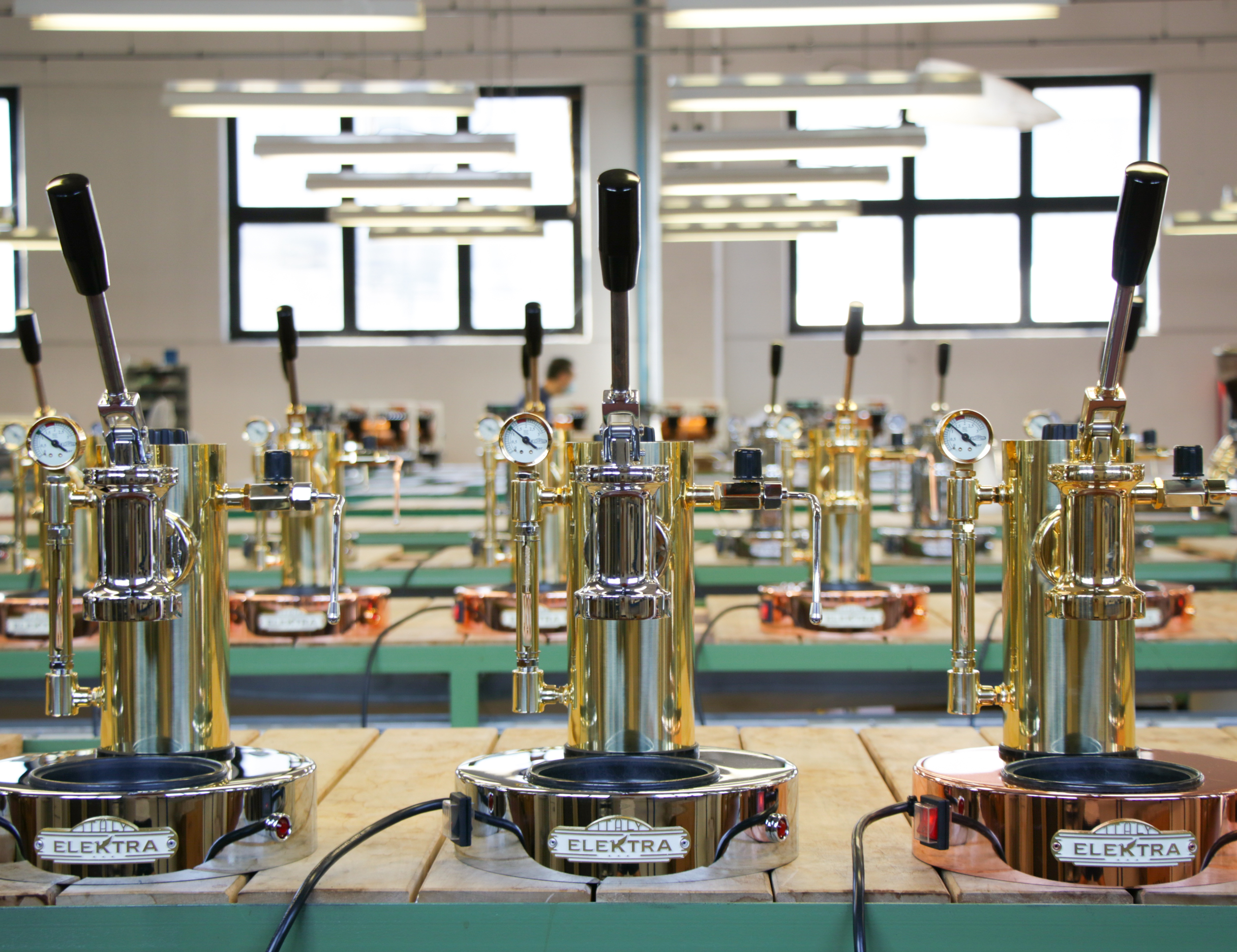In with the old: Why young people love vintage espresso machines
Jenna Gottlieb chats with Mirko Michielon of Elektra and Roland Buurman of Vintage Espresso Machines Holland to find out why new is not always better when it comes to young coffee consumers.
In an age where newer, faster, and shinier items are just a click away, vintage products are remarkably popular among younger people, namely millennials and Generation Z.
For example, “old-fashioned” hobbies like calligraphy, letterpress, and crochet are seeing a resurgence in popularity, while second-hand shop clothing is often considered “cooler” than fast fashion. Even vinyl record sales are outpacing that of CDs and streaming services.
Part of the allure of vintage concerns sustainability. As young people seek to upcycle when possible, repurposing older items becomes more and more appealing.
Depop, an ecommerce app targeting young shoppers buying and selling worn, used, or vintage clothing, has 30 million users and brought in $55 million in revenue in 2021. Tellingly, more than 90% of Depop users are under the age 26.
Another element of vintage appeal is nostalgia. Whether it is old television shows, music, or fashion, it’s about remembering what’s perceived to be a happier time – and reliving all the emotions associated with it.
It makes sense, then, that even in the world of coffee machines, vintage equipment and designs are more popular than ever. As such, millions of people around the world are attracted to the nostalgia of espresso making.
“You only have to look at a vintage espresso machine once and you immediately fall in love with its design, the charms of its figure, the lines and the elegance with which it makes the best espresso,” says Roland Buurman, owner of Vintage Espresso Machines Holland.
“My restored espresso machines find their new home in restaurants, offices, and stores but also a few homes,” he adds. “Looking at a vintage espresso machine, it can take your thoughts to a small piazza, even if you’ve never been to Italy.”

Why vintage lasts
“Vintage never gets old,” says Mirko Michielon, export manager at Elektra Espresso Coffee Machines. “Compared to ‘modern-looking’ machines, the vintage ones immediately send to the audience a feeling of tradition, passion, and fine craftsmanship that reminds of reliability and durability throughout the years.
He adds that they’re typically eye-catching because they are beautiful, shiny, and different. This look somehow contrasts with their smooth and silent operation, and people are often impressed by the build quality and ease of use.
That’s probably why Elektra continues to manufacture traditional espresso machines, albeit using the latest technology and best materials. For example, the Elektra Micro Casa Semiautomatica looks the part and operates just like a vintage machine.
Besides the looks of a vintage machine, however, its features differ greatly from those of more modern coffee machines. As such, some manufacturers are now designing traditional espresso machines with both vintage exteriors and insides packed with modern technology.
“Despite their vintage look, Elektra machines have been constantly upgraded during the years to maintain a level of technology and a set of features that make them not only attractive but also suitable for the most demanding baristas and the busiest coffee shops,” Mirko says.
The challenge, he says, is to keep the look as basic as possible while equipping the machines with features like electronic temperature control, energy-saving modes, and accurate dosing control.
“This is why, after judging Elektra machines only by their appeal, users get amazed by their usability and performance,” he explains.
Ultimately, this makes machines like the Elektra Verve incredibly appealing to younger prosumers. This particular machine has beautiful, vintage chrome and wood-grain finishings, but is also equipped with Wi-Fi so that the user can adjust parameters from their phone.
At the same time, these machines still boast the simple operability and functionality that allows home users to craft excellent espresso time and time again.
“Those choosing to work with a vintage machine may not search for all the extreme settings – rarely exploited at their best, in any location, by the way – but prefer to focus on consistency, repeatability and efficiency,” Mirko adds.
Making vintage work
For coffee businesses, a vintage machine on display is more than just a piece of working art.
In fact, it can be anything from a conversation starter to the very reason customers return to a café. That’s why vintage espresso machines should always be positioned front and centre, where customers can appreciate their beauty up-close.
“Elektra believes that the coffee machine should have the leading role and be the centre of attention inside the coffee shop,” Mirko explains. “Placing it in a strategic spot with the highest visibility can easily attract the curiosity of younger customers.”
These are the very same customers, he adds, who are used to seeing more modern machines – or they may never have paid attention to the machine before at all. A vintage machine encourages engagement, but that also means baristas should know every last detail of the machine.
“At that point, it is up to the barista to involve the consumer and amaze them with some reference or story about the vintage machine – and there are really many of them,” Mirko says.
Furthermore, baristas must also be trained to operate these machines properly. Vintage machines can be temperamental, possessing many quirks that new machines don’t have. In some cases, this adds to their character.
There can also be limitations to what the machine can produce, depending on the model, but some vintage machines perform surprisingly well.
“Last week, together with my colleague, we made over 300 espressos and cappuccinos with [a machine first designed in 1961] in about three hours,” Roland explains.
Ultimately, while many people covet a vintage espresso machine for their look, the associated nostalgia, and the “it-factor” they exude, they’re functional tools for coffee shops, too. That’s why – in spite of the constant modernisation of coffee machines, there will always be a place for vintage espresso machines.








